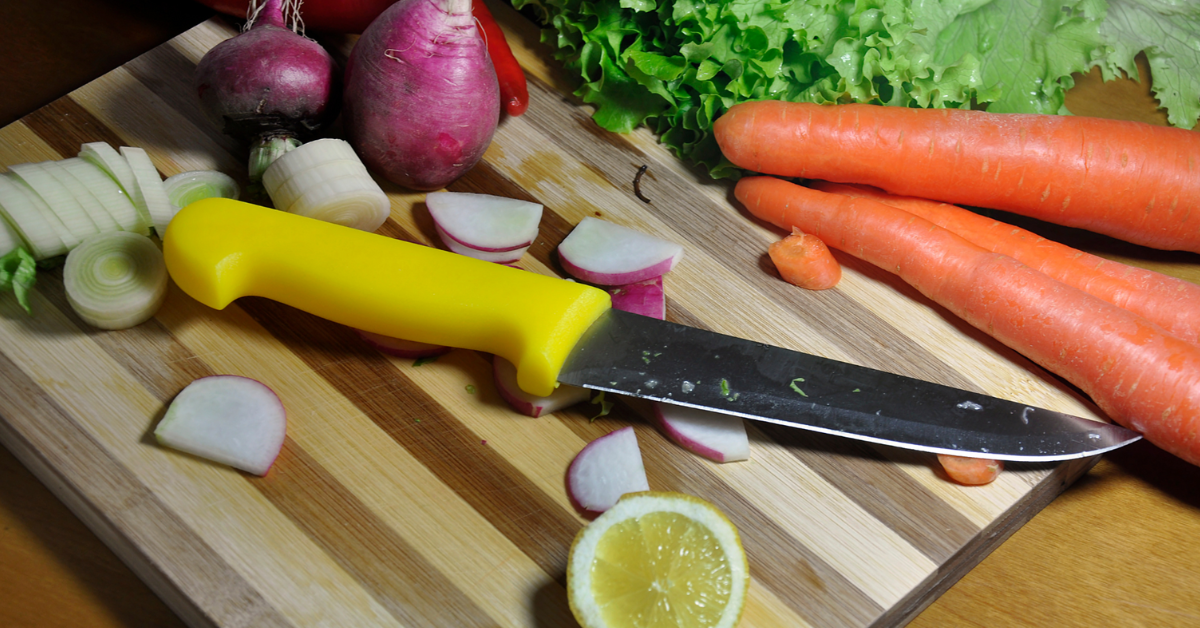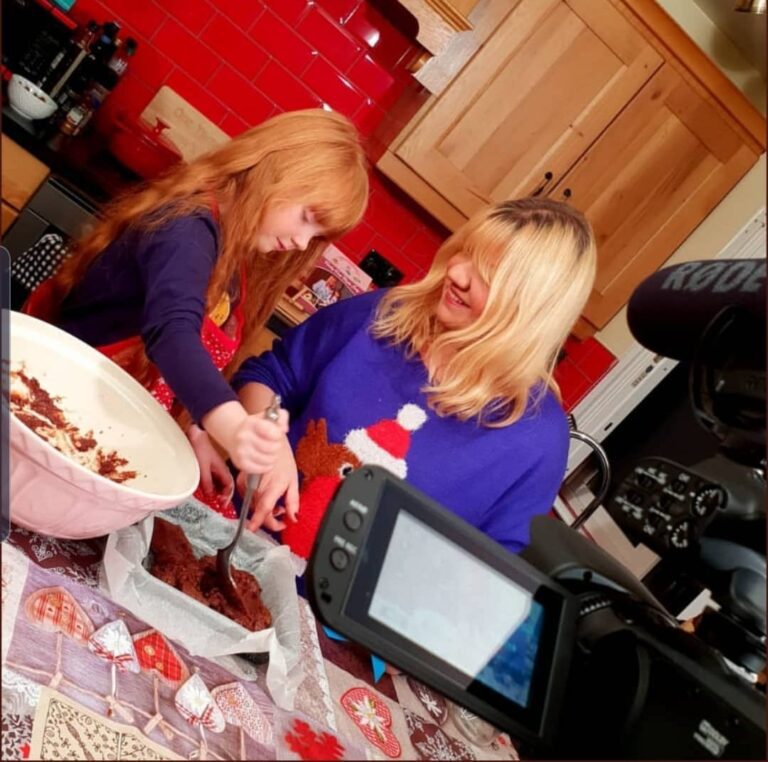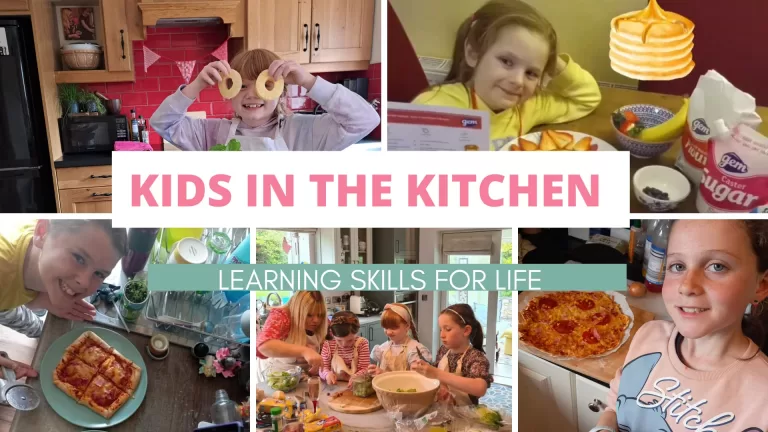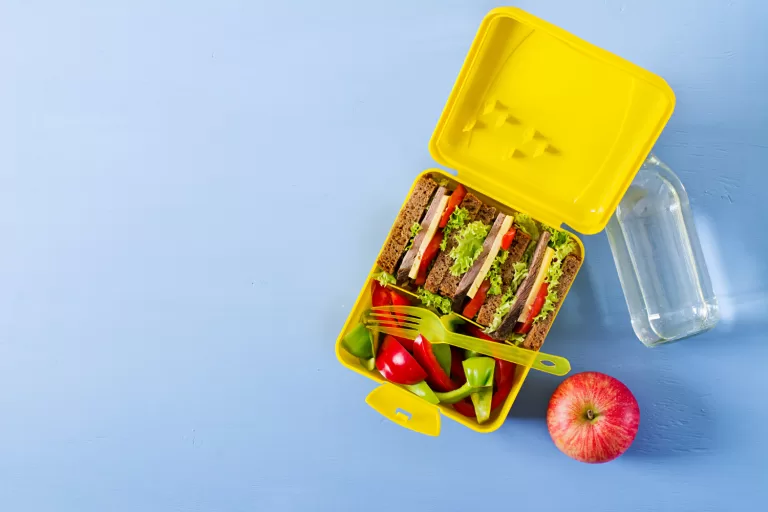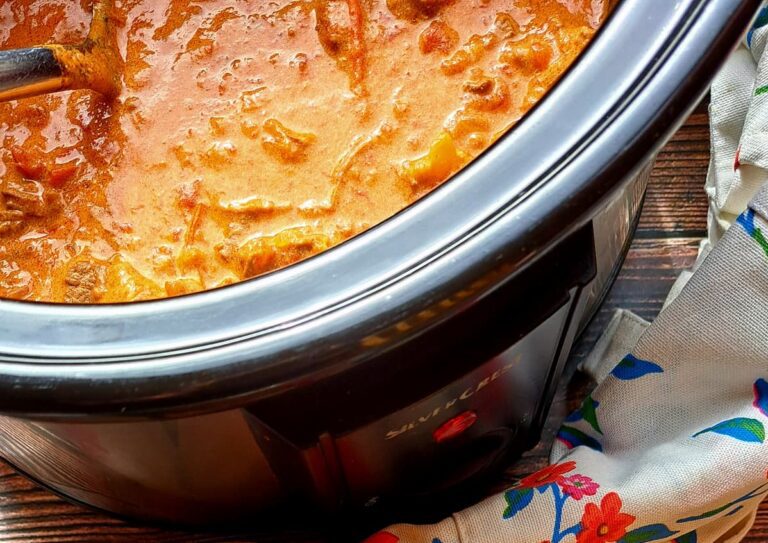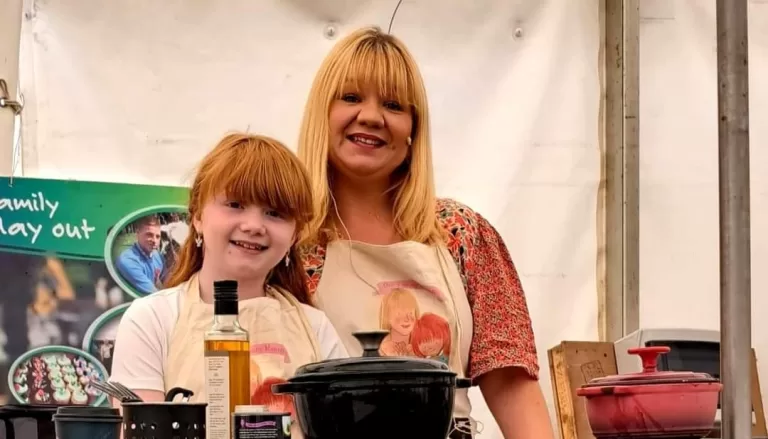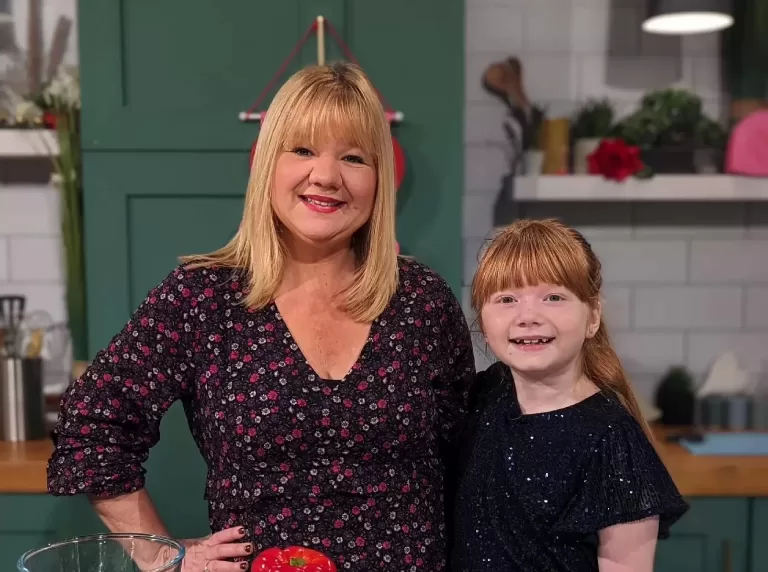Safe Chopping, Slicing and Dicing For Kids in the Kitchen
Hey Gang!
In our Family Cooking Club, we love helping children of all ages to feel confident in the kitchen. Each recipe is carefully designed so that children as young as 5 can fully participate in making a dish from start to finish.
But one of the most common concerns we meet involves chopping, blades and knives.
Understandably, parents often think:
- It’s not safe to let my child cut veg and meat
- They’re too young to use a blade in the kitchen
- I’ll let the kids do some parts of the recipe – but I’ll do the chopping
- Perhaps we’ll just stick to baking!
However, with a little creativity, even the youngest chefs can get slicing and dicing in safety.
Read on to discover some of our Family Cooking Club’s sharpest secrets:
Kitchen Chopping Skills for Beginners (5-8 Year Olds)
With this age group, we think outside the box. We Will demonstrate how to use a knife and with our safety Tips and tricks it but if you would rather your child find their confidence first we find plenty of other ways to get the job done.
Each technique prioritises safety while giving young cooks a feeling of achievement and independence.
Utensils For Beginners
If you don’t already have them, head to the shops and pick up a peeler, 2 pairs of kitchen scissors and a small grater.
Between them, these items will help your child to prepare pretty much anything they need for our Family Cooking Club recipes.
Beginner Veg Prep Examples
- To chop an onion: Once you’ve peeled off the skin, push a fork firmly into the top of the onion. Hold the handle of the fork with your non-writing hand. Then, use your writing hand to peel off bits of the onion with a vegetable peeler. Move the onion around in a circle as you go. You can then use your kitchen scissors to make bigger chunks smaller.
- To prepare carrots for bolognaise, etc: Use a vegetable peeler to create carrot ribbons. Then, use your kitchen scissors to cut them into smaller strips.
- To dice/slice peppers: Hold the pepper in both hands. Use your thumbs to press the stalk part firmly down into the middle. It should become loose and wobbly. Pull the stalk out in one clean sweep. Turn the pepper over and tap or shake out all the seeds. Use your kitchen scissors to cut the whole pepper in half. Trim off the white parts of the pepper. Finally, cut each half into strips. If you wish, you can snip each strip into dice.
I love seeing the pride on young children’s faces when they complete “grown-up” cooking steps in a safe and fun way.
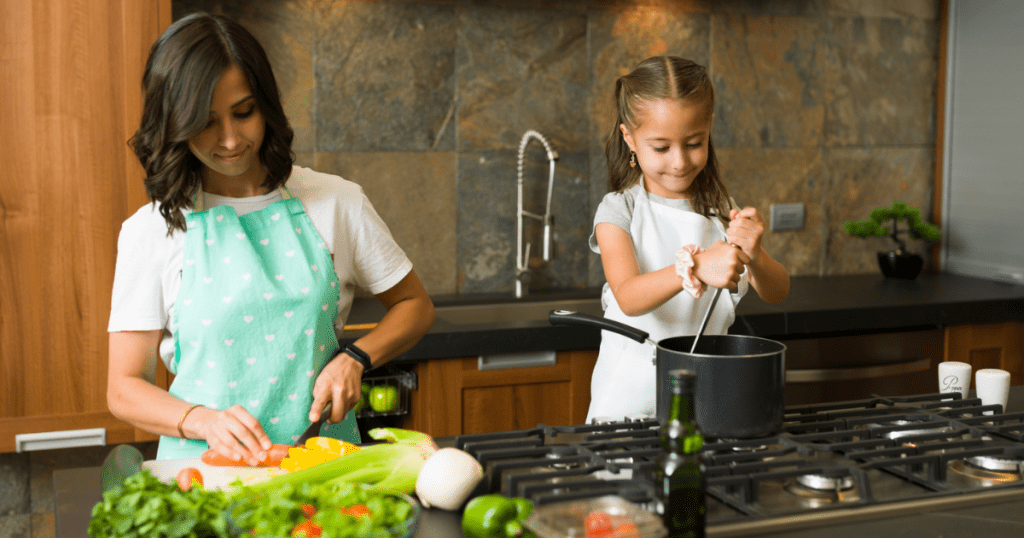

Kitchen Chopping Skills For Improvers (Age 7 and Over)
If your 7-year-old (or older) son or daughter
- is generally calm, responsible and coordinated
and
- has already been cooking for a little while….
then they may be ready to begin using a kitchen knife.
Of course, you will know your child and your circumstances best. When deciding whether or not to let them use a knife, try to balance caution with the valuable opportunity to develop a new skill.
General Safety Tips For Knives
- Put a damp cloth under the chopping board so that it doesn’t slip.
- Choose a small sharp knife that feels comfortable (it shouldn’t be too large or heavy) and suitable for the job. A sharp knife is actually safer than a blunt knife, as it cuts through the food straight away.
- Never run with knives. If you need to move around the kitchen with a knife, keep it at your side, pointed down, as you would with scissors.
- Never lick knives. It can be tempting for even older children sometimes, so make sure they know to keep them well away from their mouths.
Knife Method 1: The Bridge
This technique is ideal for halving vegetables with round edges (such as onions, carrots and peppers). By cutting them in half, you stop them from rolling around, which can be risky.
To use the bridge method:
- Hold the knife in your writing hand.
- Place the thumb of your other hand on one side of the vegetable.
- Place another finger from that hand on the other side of the vegetable. This forms a bridge shape over the vegetable.
- Position your knife under the bridge, with your remaining fingers held out of the way. This way, there should be no fingers anywhere near the blade of your knife.
- Cut the vegetable in half.
Knife Method 2: The Claw
This motion keeps fingers out of the way when chopping vegetables up small. Only use this technique on vegetable pieces that are already lying flat to the board (such as half an onion).
To use the claw method:
- Hold your knife in your writing hand.
- Create a closed claw shape with the fingers of your other hand. Use this shape to hold the vegetable in place on the board.
- As you chop, keep moving your claw further back out of the reach of the knife.
Knife Method 3: The Scatter
This is a great way of finishing off chopping that was done using the claw method. You can use it to even up the size of the pieces or make them smaller if necessary.
To use the scatter method:
- Spread your vegetable pieces (from the claw method) out on your chopping board.
- Hold the knife in your writing hand, with the blade pointing down towards the board.
- Place the fingers of your other hand over the blunt side of the knife.
- Use them to guide the knife downwards to chop.
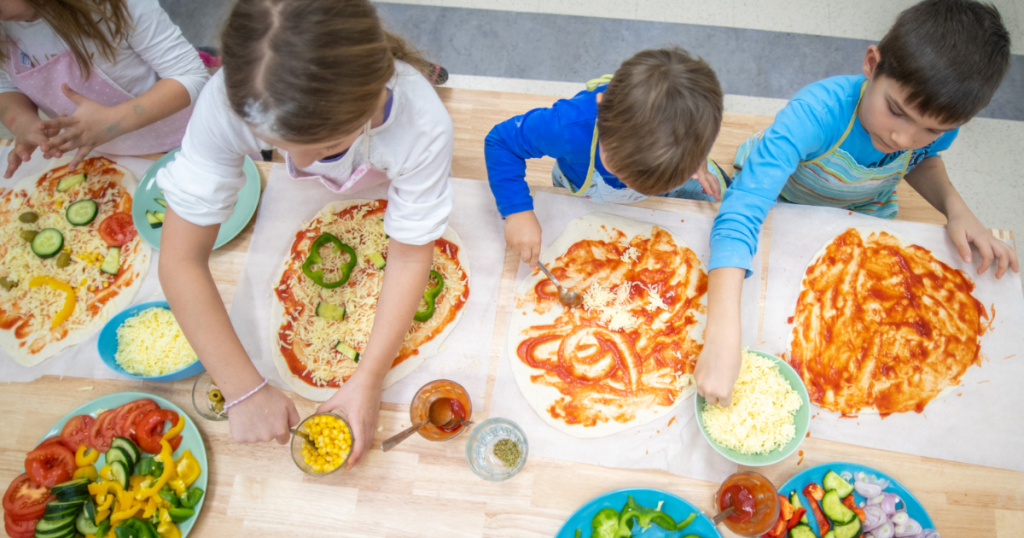

See The Techniques in Action
Week by week, techniques like these are used in our Kids in the Kitchen Zoom cook-alongs as part of our Family Cooking Club.
Over time, young cooks learn and practise them until they’re second nature. They get to watch both myself and Lils modelling safe techniques. And of course, we’re right there on hand to answer questions and give advice.
It’s really exciting to see our regulars grow in confidence as they develop and practise new skills every Tuesday (or at a time that suits them by watching the recording).
If you’d like your child to be involved, learning valuable skills for life, you can find out more here.

